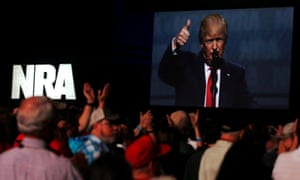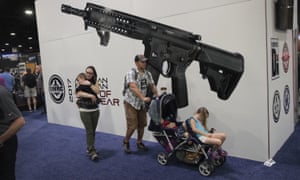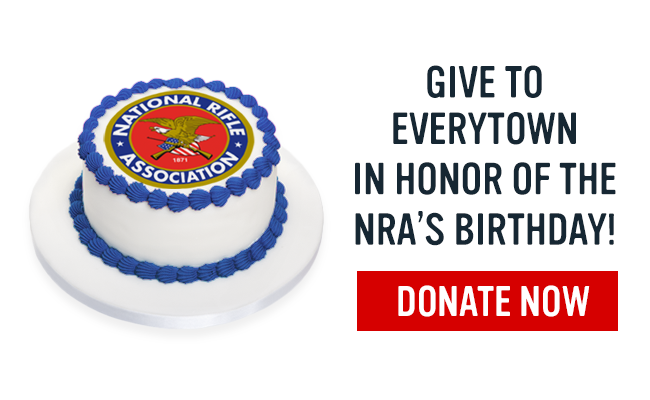Take our survey, Gabby Giffords and Mark Kelly, California shooting: 4 killed, 10 injured, Nicole Hockley, Dylan Hockley, Break the Cycle, Gun Safety, Sandy Hook Promise, NRA's birthday, The NRA is smaller than you'd think – so why does it wield such influence?
The last two months have been an emotional roller coaster.
Together, we have experienced some of the lowest lows since we began fighting to change our gun laws, and also a few highs that make it clear why our efforts are so important.
But whatever comes next for our work is going to be guided by the people who make it possible.
Now that we’ve launched Giffords, the new brand for our organization, we were hoping you could take a second to answer a quick survey sharing your priorities for our work moving forward. Will you?
When we started our work on this issue, we could never have imagined that our personal stories of responsible gun ownership would evolve into a national movement for change. That’s only possible because you’ve answered our call.
| ||||||
| ||||||
The Los Angeles Times reports that just before 8 a.m. on Tuesday, a gunman shot and killed a man and a female neighbor near his home in Rancho Tehama, before fleeing in a stolen truck.
The suspect went on a shooting spree through the community, opening fire at several locations, including an elementary school.
He carjacked another vehicle and went around firing shots at random, even shooting at a mother who was driving her son to school. All in all, the shooter killed 4 people and injured at least 10.
Local police eventually caught up to the suspect and shot him dead during an exchange of gunfire. He was found with a semiautomatic rifle and two handguns.
The gunman was later identified to be 43-year-old Kevin Neal, a local resident. No motive has been declared for the violent spree, but authorities believe the man may have been set off by a dispute with his neighbors.

There is also much that federal and state legislation can do to prevent violence, writes Nicole Hockley. We need leaders to embrace sustainable solutions
Dylan Hockley was killed at Sandy Hook elementary school on 14 December 2012.
Like all Americans, I am devastated by the senseless massacre in Sutherland Springs, Texas, that claimed the lives of 25 people, including 14 children. The idea that anyone could intentionally plan to kill and hurt so many people is impossible to comprehend. The anguish, shock and heartbreak felt by the victims’ families, survivors and their entire community is impossible for most people to imagine.
Sadly, I can not only imagine it, I live with it every day. It has been almost five years since the mass shooting at Sandy Hook elementary school that also took the lives of 26 innocent people, including my six-year-old son Dylan and 19 of his first-grade classmates.
The pain of his loss, especially to such a senseless and preventable act of gun violence, is with me every day, but it is also what compels me to find and deliver solutions that help prevent future loss of life.
Unfortunately, we as a country deal with loss of life to gun violence far too often. It has become rampant, an epidemic that no other country experiences. Two of the five deadliest US shootings in modern history happened in the last 35 days.
After every mass shooting, I hear arguments that have become all too familiar to me since Sandy Hook. Some argue for “gun control” or “gun freedom”. Others like me aren’t arguing about the gun, but are rather focusing on the person behind the gun and how their violent actions could have been prevented.
As quickly as the debate about guns starts, it ends. These horrific attacks fade from the news headlines quickly, and over and over we are told ‘Now is not the time to talk about gun violence.’
The time to talk about gun violence is long past for the 25 in Texas, the 58 in Las Vegas, the 49 in Orlando, the 26 in Newtown, the 32 in Virginia, and the thousands of others who die from gun violence every year. The time to act is now.
After the Texas shooting, President Trump said that this isn’t a “guns situation” but that “mental health is the problem”, and that a “very deranged individual” brought this horrific act of violence to First Baptist church in Sutherland Springs. Not only is this immensely stigmatizing language, it’s not wholly truthful.
Millions of Americans live with mental health conditions daily and live healthy, prosperous, violence-free lives. People who live with severe mental health conditions are much more likely to be victims of violence than perpetrate it, and are more likely to hurt themselves rather than hurt others. In fact, mental illness contributes to less than 6% of gun violence.
The truth is that mismanaged and uninterrupted fear and anger, coupled with nearly unfettered access to guns is what happened in Texas, and sadly in most mass shootings. It’s fear and anger that often escalates to a point at which the person sees no other path ahead of them except for self-harm or violence to others.
Often, shooters give off warning signs that are either missed, misunderstood, or ignored. These tragedies could have been prevented if someone had recognized the signs and made an intervention.
We know the shooter in Sutherland Springs had been jailed for assault against his wife and child, and that he sent threatening text messages to his mother-in-law, had a fascination with guns and other shootings, and should not have been able to pass a background check.
Though there was an oversight by a number of parties, and policy failures along the way, the truth is that this shooter could have gotten a gun via a private or online sale in Texas, whether or not his records were correctly sent to NICS. Once again, the signs and signals were there but missed – another preventable tragedy.
Citizens alone can do a lot within their own community to know the signs and take action to intervene before violence takes place. But there is also much that federal and state legislation can do to prevent violence.
I am asking you, Mr President, to use your influence to create more meaningful and sustainable solutions. You, along with Congress, have the power to save lives of thousands of Americans and make our country safe again.
You have the power to nationalize intervention programs that will train youth and adults how to recognize the signs and signals of individuals at-risk of violence. You also have the means to put pressure on states to comply with laws that help protect their citizens.
Extreme Risk Protection Orders (ERPOs) are one way to protect families and communities from gun violence. With ERPOs in place, family members or local law enforcement can support someone who is adjudicated as at-risk to themselves or others – as in the case of domestic violence, suicide or homicide – and temporarily remove their access to firearms and block attempted purchases until they are no longer a risk. ERPOs have been proven to save lives and to protect due process and second amendment rights.
ERPOs are established and have been successfully managed by several states including California, Oregon, Washington and Connecticut. Extreme Risk Protection Orders are legislation both Republicans and Democrats can, and should, support. The federal government should be doing everything it can to encourage states to enact such legislation that’s been proven to save lives, using the carrot or stick of federal grant money.
Historically, when the president and Congress have wanted to mandate national safety rules, like a highway speed limit or minimum drinking age, it has used the power of the purse, making funding contingent on states taking certain actions. So, if the government is serious about combatting gun violence, it should put its influence where its money is.
Use federal public safety grants – like highway or law enforcement funding – as a carrot to incentivize states to pass ERPOs. In the end, everyone wins – the federal government gets states to do what it wants, the states get the money they need, and people’s lives will be saved by a commonsense law.
There is proof that this approach has worked not only to ensure state compliance, but to save lives. In 1974, when the president and Congress set the national speed limit at 55 miles per hour, road fatalities declined 16.4% in just one year. In 1984, Congress proposed cutting 10% of federal highway funds to states that did not comply with a new national drinking age of 21.
President Reagan said, “In a case like this, where the problem is so clearcut and the benefits are so clearcut, then I have no misgivings about a judicious use of federal inducements to encourage the states to get moving, raise the drinking age, and save precious lives.” According to the NIH, drunk-driving accidents have dropped by 50% since the law was passed.
Please, Mr President. Refuse to accept these national tragedies as the norm in America. Refuse to stop progress and prevention by remaining silent. Refuse to be part of an endless debate that goes nowhere but leaves more death and grieving families every day. Help stop gun violence before it starts and let this be part of your legacy of protecting American lives.
This week was the NRA's birthday, and the organization that promoted sportsmanship and hunting no longer exists. Now, their extremist leadership pushes for dangerous policies that make it easier for guns to fall into the hands of convicted felons, domestic abusers, and the dangerously mentally ill. Not only that, their videos encourage culture wars, and fuel violent right-wing extremism. And for what? Profit.
After spending more than $50 million electing Donald Trump and allies in Congress last year, the NRA continues to push their dangerous "guns everywhere" agenda throughout the country. In fact, feeling emboldened, NRA Executive Vice President Wayne LaPierre has said repeatedly that "Our time is now." But because we've been facing them head on -- in state houses across the country, blocking them from gutting our gun safety laws, the NRA has become desperate and will do everything in their power to push for dangerous gun bills that put the safety of our families and communities at risk.
But that desperation is our motivation. Last week, after we helped elect a slate of gun sense champions -- including a new Governor, Lieutenant Governor, and Attorney General -- who will make common sense gun laws a reality in Virginia -- the NRA's own backyard -- we know the gun lobby is going to spend whatever it takes to ensure the 2018 elections go their way.
We can stop them, but not without you. In spite of the NRA's birthday, chip in what you can now to support our fight against their extremist agenda.
We've loosened the NRA's chokehold on legislatures in all 50 states, passing safer gun laws, and defeating NRA-backed proposals that would gut our gun safety laws. We've put pressure on Members of Congress to reject the NRA leadership's extreme agenda. We're on the frontlines against the NRA across the country and are fighting their dangerous extremism -- Every. Single. Day.
So for the NRA's birthday, support our fight: Say "Happy Birthday" by giving what you can now and help us resist against the NRA's violent extremism.
The NRA is smaller than you'd think – so why does it wield such influence?
Compared with others, the 145-year-old lobby group isn’t a vast spender – but it has the power to mobilize a grassroots support and make Washington listen
The hospital staff called to action after the mass shooting in Las Vegas
On the eve of his 100th day in office, Trump addressed the NRA’s annual conference and said: ‘You came through for me, and I am going to come through for you.’

The vast majority of Americans support gun control, and yet Congress has failed to toughen laws even in the wake of a series of mass shootings. With the NRA pouring money into political races at record levels it is an easy argument to make that the gun lobby has bought Washington – but that fails to paint a full picture.
So far this year, the NRA has spent $4.1m on lobbying – more than the $3.1m it spent in all of 2016. That’s real money, but for comparison, the dairy industry has spent $4.4m in the same period, according to the Center for Responsive Politics (CRP). The National Association of Realtors, one of the biggest spenders, has paid out $32.2m lobbying on housing issues. The US Chamber of Commerce, the largest spender of all, has spent $104m.
The NRA’s influence does not stem solely from lobbying. Thanks to the supreme court’s Citizens United decision, the spigot is now off on “independent expenditures” allowing groups and individuals to back – or attack – candidates, as long as those campaigns are not made in cooperation with, or at the request of, a candidate.
The NRA bet big on 2016’s presidential election, making independent expenditures worth $53.4m. And the cash seemed to have been well spent. The NRA poured $14.4m into supporting 44 candidates who won and $34.4m opposing 19 candidates who lost, according to CRP. Its only big loss was in Nevada, for the seat vacated by the Democratic minority leader, Harry Reid.
Nor does the power of the guns manufacturers fully explain the NRA’s power. Guns are big(ish) business. Gun and ammunition manufacturers will have revenues of $13.3bn and profits of $1bn in 2017, according to IBISWorld. Gun and ammunition stores this year will have revenues of $85.bn and profits of $256m.
But there are far bigger industries. The auto industry (which has spent $51.8m on lobbying so far in 2017), is on course for revenues of $105.3bn and profits of $3.1bn in 2017.
The NRA’s influence, too, is out of proportion to its financial firepower. This is a world with far bigger spenders in Washington – the billionaire Koch brothers spent $889m on the election. And far bigger industries: Apple’s revenues were a record $52bn in the last three months alone and their cash, along with the other tech giants, makes the gun industry look like a rounding error.
The NRA's lobbying spend over the past decade
2017 spend to date, $m
2017
2016
2015
2014
2013
2012
2011
2010
2009
2008
0
1
2
3
4
Dan Auble, a senior researcher at CRP, said NRA’s spending was at a record high but remained “paltry” in comparison to groups like the pharmaceutical industry.
If the gun lobby is to be successful, it needs to spend money in Washington, and it does. But the amount alone does not explain the NRA’s success.
“The NRA is not successful because of its money. To be sure, it is hard to be a force in American politics without money. The NRA has money that it uses to help its favored candidates get elected. But the real source of its power, I believe, comes from voters,” said Adam Winkler, professor of constitutional law at the UCLA School of Law and author of Gunfight: The Battle over the Right to Bear Arms in America.
Revenue comparison: gun industry v auto industry
Projected 2017 revenues, $bn
Gun and ammunition manufacturers
Gun and ammunition stores
Auto industry
0
20
40
60
80
100
By choosing its battles wisely, the NRA has shown an ability to swing primary elections in favor of pro-gun candidates, Winkler said. “That’s the real source of their strength,” he said. That and its use of a relatively small number of highly motivated people to push an agenda that appears out of step with the general population, which, according to recent polling, is in favour of stricter gun laws.
The 145-year-old organization claims 5 million active members, although that number is disputed. But whatever its actual size, that membership is a powerful tool, said Robert Spitzer, professor of crime, law and policy and gun control at the State University of New York at Cortland and the author of five books on guns.
NRA lobbying relative to other industries
2017 to date, $m
US Chamber of Commerce
Auto industry (combined)
National Assn of Realtors
American Medical Assn
Alphabet Inc
Boeing
National Retail Federation
Amazon
Exxon Mobil
NRA
0
10
20
30
40
50
“They have a very powerful ability to mobilize a grassroots support and to engage in politics when most Americans can barely be bothered to vote,” he said. “I mean more than voting. I mean going to a meeting, writing a letter, contacting a friend,” he said. “And because so few Americans do those things, if you get a bunch of people in a locality who are all prepared to go out to a meeting they can have a big effect.
“Elected officials feel the impact of constituents when they hear their voices,” said Spitzer. “Politics is often about the squeaky wheel – who makes the loudest noise, who gets the most attention.”
There are, however, problems on the horizon for the NRA. For one, the gun control lobby is growing. Billionaire Michael Bloomberg’s gun control group Everytown for Gun Safety is threatening to spend more than $25m in 2018 races. Americans for Responsible Solutions, a gun control political action committee set up by Gabrielle Giffords, a former Democratic congresswoman whose career was ended when she was shot along with 18 others in an Arizona suburb, spent $13.4m in 2016.
The issue for gun control advocates is that they have yet to develop as powerful a voice – or as deep contacts in Washington – as the gun lobby. “I think it’s fair to say that so far they have been thwarted at the federal level,” said Auble. “They are just not as well funded, not as established, and don’t have the history the NRA has.”
Even if the gun control groups gave the same amount of money to the same candidates, said Winkler, those candidates would not vote in favor of gun control. “It’s not just money,” he said. “If Michael Bloomberg said he will give you $2 for every $1 the NRA gives you, it is not going to work.”
The truth is that gun control is not an area where money is leading politics, he said. It’s an issue that some voters care a lot about and elected officials respond to those voters. “Especially the intense, mobilized, minority of voters that support most vigorously the right to bear arms.”
But putting the money and its current influence aside, the NRA faces existential issues in the years ahead as its opposition grows.
The election of Donald Trump was a major victory for the NRA. On the eve of his 100th day in office, Trump addressed the NRA’s annual conference, the first sitting president to do so since Ronald Reagan in 1983. “You came through for me, and I am going to come through for you,” Trump told the cheering crowd.
“I am here to deliver you good news: the eight-year assault on your second amendment freedoms has come to a crashing end.”
Attendees at the NRA convention in Atlanta in April.

By mid-century the US is expected to become a majority minority nation. The NRA’s core constituency is basically older white males. Younger people are not taking up gun ownership at the same rate as older people did, said Spitzer, and polls of minorities show they feel more strongly about gun control. Attempts by the NRA to broaden its appeal do not seem to have paid off. “They are facing an existential demographic problem,” said Spitzer.
Even a Trump presidency may not be good for the NRA. Barack Obama and Hillary Clinton presented the NRA with obvious foes. Gun sales are falling after the glory years of the Obama administration, when each mass shooting led to a spike in sales as Democrats called for gun control and gun owners ran to the shops. With their people in office, the industry – and the NRA – lack a demon to drive sales and membership.
The NRA has shifted gears post-Obama, taking a leaf out of Trump’s all-caps textbook and attacking the media for demonizing gun owners and the president. Such a move is unlikely to win over minority support.
“If the NRA really wants to reach a new generation, maybe they need to reach out to Black Lives Matter. Who are the people who are being abused by government agents the most? You would think that Black Lives Matter would have some affinity with that idea that you need guns to protect yourself against a hostile government that can’t protect you,” said Spitzer.
But even the NRA knows that the best thing that the gun control movement could see right now would be a lot of African Americans or Muslims carrying guns around America.
The NRA has changed many times in its history, for much of the 20th century it supported gun control. For all its current power there is nothing to suggest the organization is invulnerable to change. Indeed, in this month’s special elections NRA favorites fell to candidates who support more gun control. “The NRA face really significant challenges. How they manage them remains to be seen,” said Spitzer.
While we have you … help us break the cycle of failure on gun violence
$32,526raised so far
$0$100K goal
It’s time for a radically different approach to media coverage of gun violence in the US. The Guardian is seeking contributions to fund Break the Cycle, our in-depth series to challenge the orthodoxy that gun control is simply too difficult – and promote creative solutions.
Politicians often insist after mass shootings that “now is not the time” to discuss reform. We believe now is the time. By keeping the issue of gun violence in the public eye, we can drive a conversation and create meaningful change. Your support will fund our in-depth reporting on guns throughout 2018.
Make a contributionPoliticians often insist after mass shootings that “now is not the time” to discuss reform. We believe now is the time. By keeping the issue of gun violence in the public eye, we can drive a conversation and create meaningful change. Your support will fund our in-depth reporting on guns throughout 2018.




















